Keith Park's Flying Coveralls
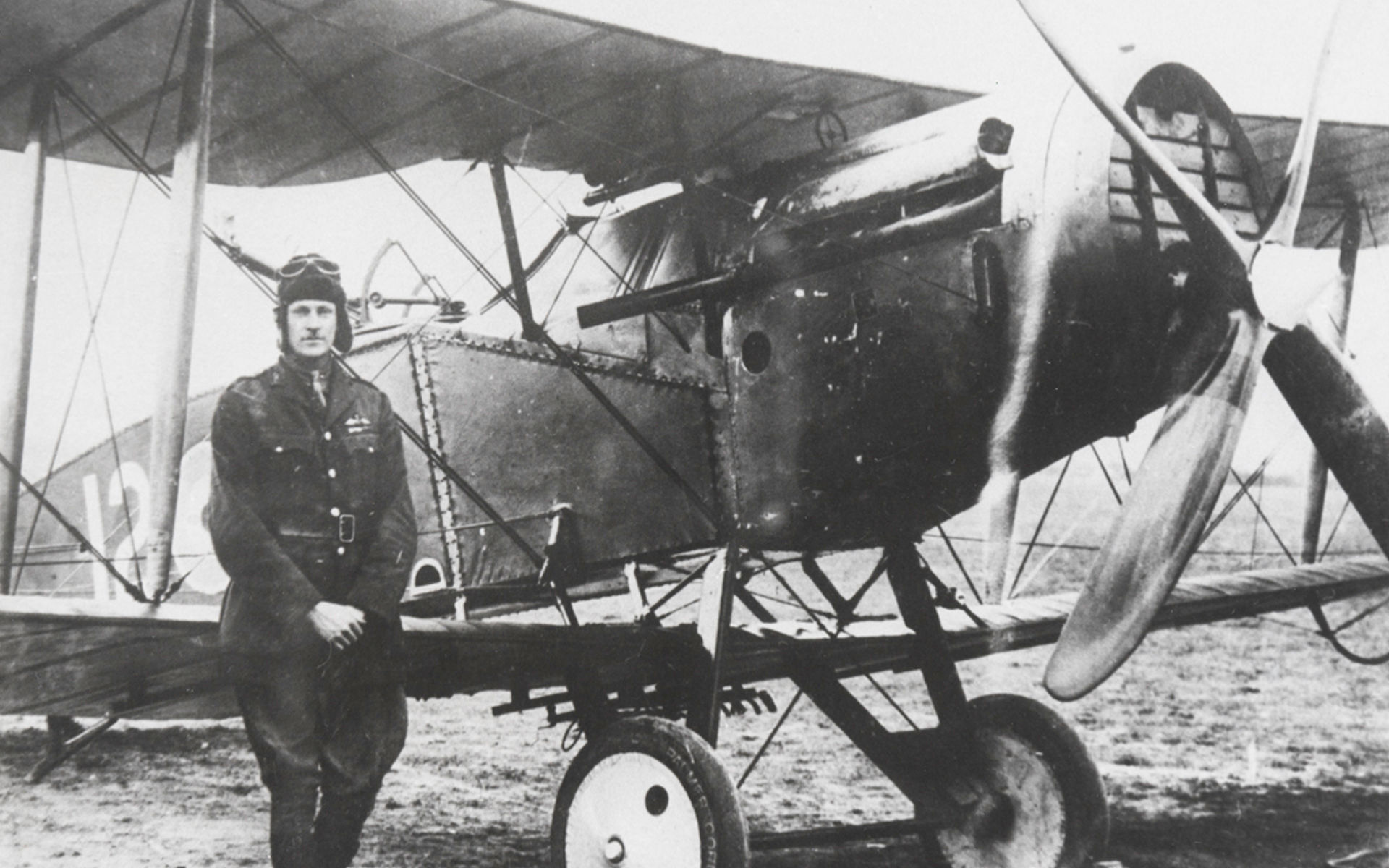
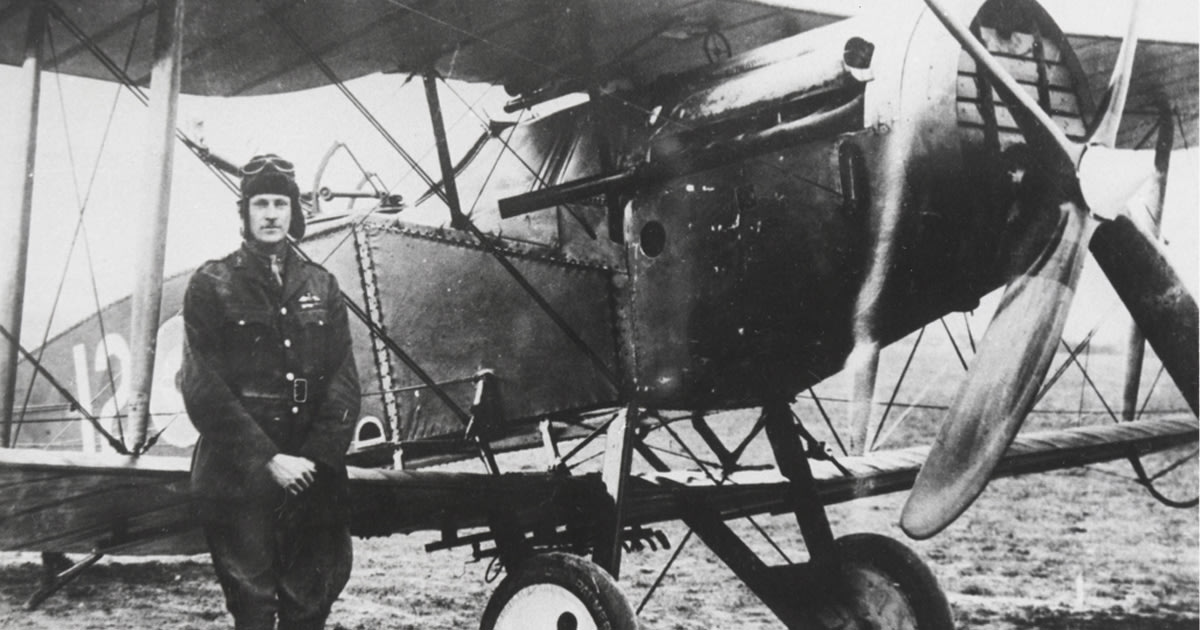
Sir Keith Park beside his Bristol fighter, 14-0096. Walsh Memorial Library, The Museum of Transport and Technology (MOTAT).
The shortcomings of the Sidcot suit
When WWII began, aircrew found the standard issue flying suit, a 1930 development of the WWI Sidcot suit, too hot for use during summer and when flying over warmer climates. Rapid changes to aircraft technology including enclosed cockpits, higher flying altitudes, and fire risks also created a need for the RAF to issue a greater range of suitable flying clothing and protective gear. RAF crews found the barathea wool and gabardine uniforms fine for stations in the temperate climates of Northwest Europe but incompatible for the hot and humid conditions of North Africa, Southeast Asia, and the Mediterranean.
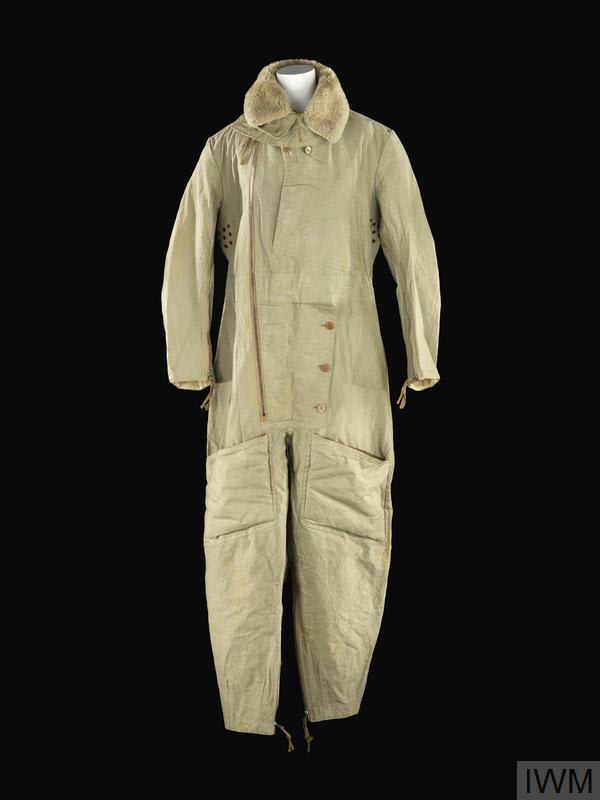
1941 Flying suit using the 1930 Sidcot pattern: Royal Air Force. Imperial War Museum, catalogue number: EQU 4015
The RAF first believed that uniforms provided in desert climates would be fine in Southeast Asia, but soon discovered they were ill-suited for the hot, moist conditions in areas with high insect populations. Special clothing was thus developed for flying and survival in tropical conditions. It was Clive Vernon Beadon who was tasked with improving survival aids provided for use by aircrew within the South East Asia Command. The Beadon Flying Suit was designed with survival in mind, recognising the possibility that an aircraft could be brought down over the jungle. As such, they feature 12 pockets for holding survival equipment such as rations and medicine. (1)
The suit in the MOTAT Collection is a development of the Beadon Flying Suit – the RAF mass produced version for tropical conditions. The suit was referred to as the RAF standard issue Lightweight Flying Coverall and was issued roughly between 1946 and 1951. Though the suit was intended for use in tropical regions, it proved popular and could frequently be seen in use by aircrew in more temperate climates. (2)
![RAF Lightweight Flying Coverall [issued to Sir Keith Park]. Royal Air Force. Circa 1946. 1982.905. The Museum of Transport and Technology (MOTAT).](https://images.ctfassets.net/mplktqcfflsk/3McznAkWQ220VK0XERCxfy/28a780caa6b615c6f0ffeeb2144aea37/1982.905_p3.jpg?w=1261&h=800&fl=progressive&q=85&fm=jpg&bg=transparent)
RAF Lightweight Flying Coverall [issued to Sir Keith Park]. Royal Air Force. Circa 1946. 1982.905. The Museum of Transport and Technology (MOTAT).
The Lightweight Flying Coverall featured refinements from the Beadon suit including:
a change from khaki or green drill to a blue-grey gabardine with knitted cuffs and collar
a pocket layout like the Beadon but with more press fasteners
a smaller integral belt (centre of the suit) that no longer served as a webbing belt
no attachable rucksack
the outer sleeve could be folded back over the knitted cuff and fastened tightly to protect from insects.
A scarf has also been sewn into these coveralls post-issue, with MOTAT’s Conservation team highlighting the handsewn nature of the scarf – possibly a personal addition at the request of Park. The manufacturer’s label is no longer present on the object, being replaced by a personalised nametag reading "Keith Park". The original label would have included the garment’s name, size, RAF Store’s reference number and a contract number. Like the handsewn scarf, this is another detail that makes these coveralls unique to Park as the wearer, giving them a special place in MOTAT’s collection.
Sir Keith Park (1892-1975)
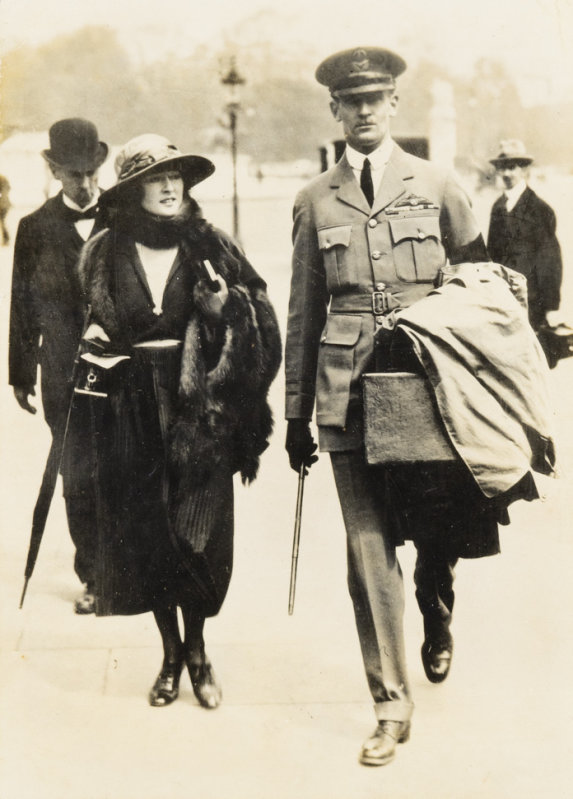
Sir Keith and Lady Dorothy Park crossing from Buckingham Palace. Park had just received his decoration from King George VI immediately after the war, 14-0209. Walsh Memorial Library, The Museum of Transport and Technology (MOTAT).
Keith Park was born in Thames (New Zealand) on 15 June 1892. In 1914, he signed up for military service as Lance Bombardier for WWI. He served with the 4th (Howitzer) Battery and landed at Cape Helles on the Gallipoli Peninsula (Turkey) in 1915. Six months after being evacuated from Gallipoli, Park was reposted to the Somme Offensive in France. In 1916, he was injured and returned to England to recover. While convalescing, Park was granted a transfer to the Royal Flying Corps (later the Royal Air Force) where he served with 48 Squadron for the remainder of WWI.
The decision to join the RFC ultimately changed the course of Park’s life and his impact on aerial warfare during WWII would become his legacy, namely in the Battle of Britain and during the Siege of Malta. At the time of the Battle of Britain, Park was commanding No. 11 Group in the defence of London and Southeast England. Historian Dr. Adam Claasen praises Park for his leadership qualities, calling him "no armchair commander". (3) Instead, he was often found in the air in his Hurricane and would regularly speak with his fellow airmen to understand what was happening during raids. His strategic leadership of No. 11 group is part of what saw the Allied forces successful during the Battle of Britain.
Another key moment in Park’s career was when he replaced Hugh Lloyd as RAF commander on the Island of Malta, the only allied base between Gibraltar and Egypt at the time. Park’s wife, Dorothy "Dol", kept a scrapbook of photographs, newspaper clippings, and other ephemera relating to Park during this time, when he came to be known as the "Defender of Malta". This significant object is now in Walsh Memorial Library’s collection and shows how newspapers reported Park’s move from a defensive aerial strategy to an offensive tactic, using RAF crews to intercept planned raids on Malta and disrupt supply routes between Tunisia and Sicily. Vincent Orange, Park’s biographer, writes that Park’s success in Malta was notable because it provided some positive war news during a time where news elsewhere was bad – the Axis powers did not invade Malta and the attack on fighter aircraft was in Allied favour. (4)
![Image: Dorothy Park (née Parish). [1940s]. [Scrapbook documenting Sir Keith Park's involvement in the Siege of Malta], MSS-2018-4. Walsh Memorial Library, The Museum of Transport and Technology (MOTAT).](https://images.ctfassets.net/mplktqcfflsk/7HBGK2P0Hf9bLk6KlH5FET/0c46c6b95dcad3d04dcdc51ee5fec6cf/MSS-2018-4_005.jpg?w=1166&h=800&fl=progressive&q=85&fm=jpg&bg=transparent)
Dorothy Park (née Parish). [1940s]. [Scrapbook documenting Sir Keith Park's involvement in the Siege of Malta], MSS-2018-4. Walsh Memorial Library, The Museum of Transport and Technology (MOTAT).
Air Commander of South East Asia
At the culmination of the Second World War Park was made Air Commander of the South East Asia Command from February 1945 and was based in Ceylon (now Sri Lanka) and then Singapore until May 1946. It is likely that the flying coveralls in MOTAT’s collection were issued to Park during this appointment. In this role he visited and guided RAF Stations under his command, managed aerial provisions to armed forced in Burma and was involved with the repatriation of about 125,000 survivors after formal surrender by Japan. With many achievements to his name, Park retired from the RAF as Air Chief Marshal.
![Image: RAF Lightweight Flying Coverall [issued to Sir Keith Park], Royal Air Force. Circa 1946. 1982.905. The Museum of Transport and Technology (MOTAT).](https://images.ctfassets.net/mplktqcfflsk/5lpPGkK0dBn9RbsIv1JjQP/dd98798a5ba25290c5fd07bda85bc222/1982.905_p2.jpg?w=575&h=800&fl=progressive&q=85&fm=jpg&bg=transparent)
RAF Lightweight Flying Coverall [issued to Sir Keith Park], Royal Air Force. Circa 1946. 1982.905. The Museum of Transport and Technology (MOTAT).
The journey of the coveralls to New Zealand would have likely coincided with the Parks’ decision to retire in New Zealand from 1948. For the remainder of Park’s life, he carried out civic and philanthropic roles until his death in 1975. The coveralls are a significant object in the Air and Space collection, being donated to MOTAT in 1982 by the Park family.
To ensure their continued care, the Conservation team at MOTAT have recently undertaken freezer treatment of the coveralls and completed brush vacuuming and cleaning. Corrosion has also been removed from the metal components of the coveralls.
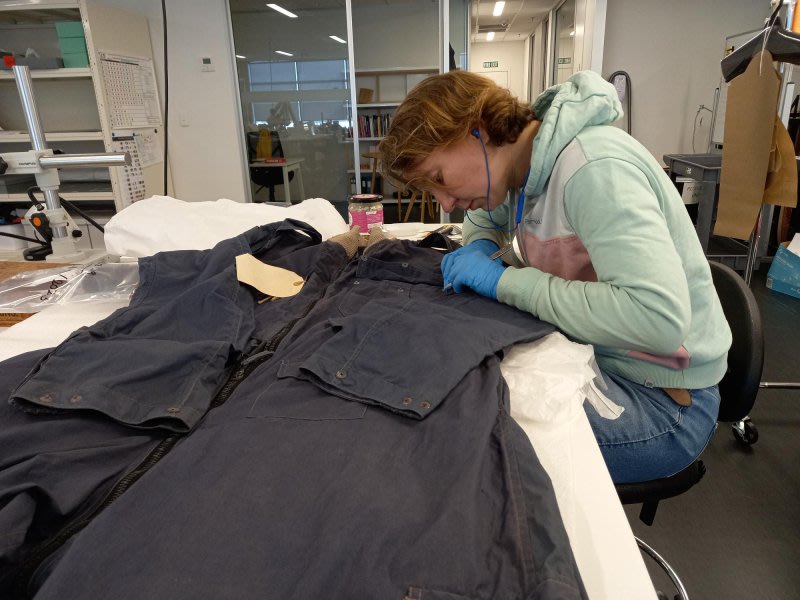
Senior Conservation Technician removing corrosion from the coveralls, The Museum of Transport and Technology (MOTAT).
Throughout MOTAT’s history, we have told the story of Sir Keith Park as someone who applied ingenious leadership during one of history’s most devastating conflicts. The Aviation Hall at Motions Road was opened in honour of his name and there has been an on-going effort to collect objects associated with Park’s impact on aviation. You can browse some more of these objects here .
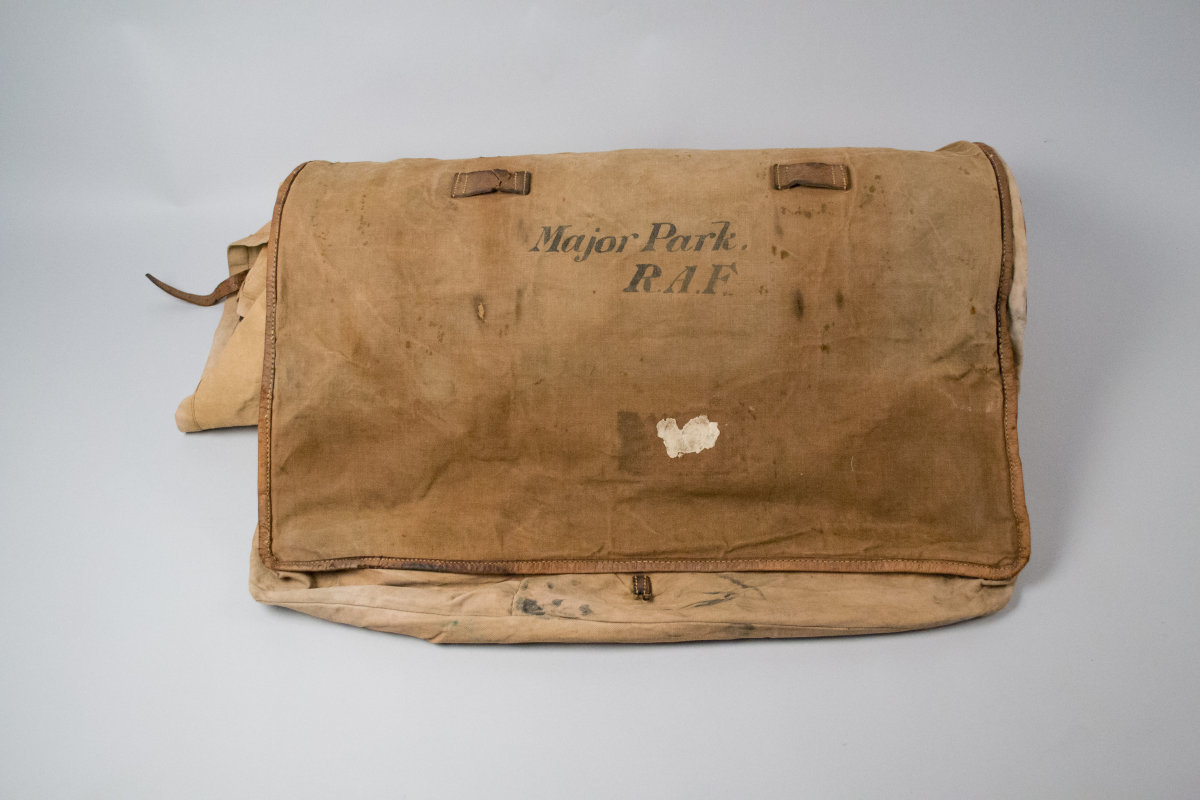
Circa 1918. Sleeping bag [Major Park RAF], 2011.454. The Museum of Transport and Technology (MOTAT).
Story by Chelsea Renshaw, MOTAT Transport Curator, Published July 2023
Sources:
Claasen, Adam. (2022). Sir Keith Park: A Commander at War. Accessed 2 June 2023.
MOTAT Emails with RAF Museum Curator. July 2022.
MOTAT Conservation Assessment. July 2022.
Orange, Vincent. (1984). A biography of Air Chief Marshal Sir Keith Park GCB, KBE, MC, DFC, DCL, 89-077. Walsh Memorial Library, The Museum of Transport and Technology (MOTAT).
Prodger, Mick J. 1997. Luftwaffe Vs. Raf. Flying Clothing of the Air War, 1939-45 /. Schiffer Military/Aviation History. Atglen, PA: Schiffer Pub.
Rood, Graham (Dr.) (2014). A brief history of flying clothing, Journal of Aeronautical History. Accessed 28 July 2022.
New Zealand Government. (2017). "Keith Park". Accessed 1 August 2022.
Endnotes:
[1] A full list of survival items can be found in the RAF Escape Tools Volume II. In: Prodger, Mick J. 1997. Luftwaffe Vs. Raf. Flying Clothing of the Air War, 1939-45 /. Schiffer Military/Aviation History. Atglen, PA: Schiffer Pub.
[2] MOTAT Emails with RAF Museum Curator. July 2022.
[3] Adam Claasen. (2022). Sir Keith Park: A Commander at War. Accessed 2 June 2023.
[4] Orange, Vincent. (1984). A biography of Air Chief Marshal Sir Keith Park GCB, KBE, MC, DFC, DCL, 89-077. Walsh Memorial Library, The Museum of Transport and Technology (MOTAT).